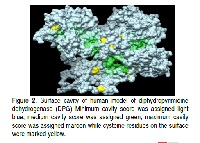In silico investigations revealed four potential colon cancer drugs from phytochemicals in Zingiber officinale
Keywords:
Colon cancer, Zingiber officinale, virtual screening, Ginger, Molecular dockingAbstract
Cancer is a difficult disease to treat, and few effective drugs are available. Hence, it is of great importance to develop effective anti-cancer therapeutic agents with well-defined pharmacokinetic properties. Although, ginger (Zingiber officinale) has a number of proven pharmacological activities, its effect on colon cancer has not received much attention. This study therefore investigated the potential colon cancer drug of compounds found in ginger. Dihydropyrimidine dehydrogenase was modeled using comparative homology modeling and virtual screening was performed locally on a Linux platform using AutoDock Vina®. The results showed that human dihydropyrimidine dehydrogenase is a homolog of pig dihydropyrimidine dehydrogenase. The leads of potential colon cancer drugs were beta-sitosterol, 6-Shogoal, Alloaromadedrene, and Zingiberol. They had similar binding site with levamisole for tumor necrosis factor ligand superfamily member 6 with His 148 and Tyr 192 common at their binding site whereas they had different binding sites from 5-fluorouracil for dihydropyrimidine dehydrogenase. The leads had better bioactivities compared with reference drugs (5-flourouracil and Levamisole) approved clinically for the treatment of colon cancer. In vitro, ex vivo and/or in vivo validations of the leads against colon cancer are recommended.
References
Hegde M, Karki SS, Thomas E, Kumar S, Panjamurthy K, et al. Novel Levamisole Derivative Induces Extrinsic Pathway of Apoptosis in Cancer Cells and Inhibits Tumor Progression in Mice. PLoS ONE 7(9): 2012; e43632. doi:10.1371/journal.pone.0043632
Robert J, Jarry C. Multidrug resistance reversal agents. J Med Chem. 2003; 46: 4805–4817
Daniel B, Longley D, Paul H, and Patrick GJ, 5-Fluorouracil: mechanisms of action and clinical strategies Nature Reviews Cancer 2003; 3:330-338
Ghosh K, Banerjee S, Mullick HI, and Banerjee J. Zingiber Officinale: A Natural Gold. Int. J. Pharma and Bio sciences 2011; 2(1) 283 – 294
Pieper U, Webb BM, Dong GQ, Schneidman-Duhovny D, Fan H, Kim SJ, Khuri N, Spill YG, Weinkam P, Hammel M, Tainer JA., Nilges M, Sali A. ModBase, a database of annotated compiarative protein structure models and associated resources Nucleic Acid Research 2013 1-11 doi:10.1093/nar/gkt1144
Eramian D, Eswar N, Shen MY, Sali A. How well can the accuracy of comparative protein structure models be predicted? Protein Sci. 2008; 17: 1881-1893
Pettersen EF, Goddard TD, Huang CC, Couch GS, Greenblatt DM, Meng EC, Ferrin, TE. UCSF Chimera: A visualization system for exploratory research and analysis. J Comput Chem.; 2004; 25(13):1605-12.
Fiser A, Do RK Sali A. Modeling of loops in protein structures Protein Sci. 2000; 9 1753-1773
Sali A . MODELLER: A program for protein structure modeling release 2014; 9.14, r10167
Sali A, Blundell TL. Comparative protein modeling by satisfaction of spatial restraints Protein Sci. 1993; 234 (3) 779-815
Trott, O. and Olson, A. J. (2010) AutoDockVina: improving the speed and accuracy of docking with a new scoring function, efficient optimization andmulti-threading. Journal of Computational Chemistry; 31: 455-461.
Michel FS. Python: A Programming Language for Software Integration and Development. J. Mol. Graphics Mod.; 1999; 17:57-61.
Morris GM, Huey R., Lindstrom W, Sanner MF, Belew RK, Goodsell DS, Olson AJ. Autodock4 and AutoDockTools4: automated docking with selective receptor flexiblity. J. Comp. Chem.; 2009; 16: 2785-91.
Irwin JJ, Sterling T, Mysinger MM, Bolstad ES, Coleman RG. ZINC: A Free Tool to Discover Chemistry for Biology Journal of Chemical Information and Modeling 2012; 52 1757−1768
Ru J, Li P, Wang J, Zhou W, Li B, Huang C, Li P, Guo Z, Tao W, Yang Y, Xu X, Li Y, Wang Y, Yang L. TCMSP: a database of systems pharmacology for drug discovery from herbal medicines. J.Cheminformatics; 2014; 6(1):13.
Keshavarz F, Alavianmehr MM, Yousefi R. Molecular interaction of BenzalkoniumIburofenate and its Discrete Ingredients with Human Serum Albumin. Phys. Chem. Res; 2013; 1(2): 111 – 116.
Saeidnia S, Manayi A, Gohari AR, Abdollahi M. The Story of Beta-sitosterol- A Review. European Journal of Medicinal Plants; 2014; 4(5): 590-609.
Ghasemzadeh A, Jaafar HZE, Rahmat A, Optimization protocol for the extraction of 6-gingerol and 6-shogaol from Zingiber officinale var. rubrum Theilade and improving antioxidant and anticancer activity using response surface methodology, BMC Complementary and Alternative Medicine 2015; 15:258 DOI 10.1186/s12906-015-0718-0
Bode A. Ginger is an effective inhibitor of HCT116 human colorectal carcinoma in vivo . Frontiers in Cancer Prevention Research Conference 2003; Phoenix (AZ):
Manju V, Nalini N. Chemopreventive efficacy of ginger, a naturally occurring anticarcinogen during the initiation, post-initiation stages of 1,2 dimethylhydrazine-induced colon cancer. Clin Chim Acta 2005;358:60 – 7.
Nagasawa H, Watanabe K, Inatomi H. Effects of bitter melon (Momordica charantia l.) or ginger rhizome (Zingiber offifinale rosc) on spontaneous mammary tumorigenesis in SHN mice. Am J Chin Med 2002;30:195 – 205.
Zick SM, Djuric Z, Ruffin MT, Litzinger AJ, Normolle DP, Alrawi S, Feng MR, and Brenner DE, Pharmacokinetics of 6-Gingerol, 8-Gingerol, 10-Gingerol, and 6-Shogaol and Conjugate Metabolites in Healthy Human Subjects, Cancer Epidemiol Biomarkers Prev 2008;17(8). doi:10.1158/1055-9965.EPI-07-2934
Ha SK, Moon E, Ju MS, Kim DH, Ryu JH, Oh MS, Kim SY, 6-Shogaol, a ginger product, modulates neuroinflammation: A new approach to neuroprotection, Neuropharmacology 63 (2012) 211e223



